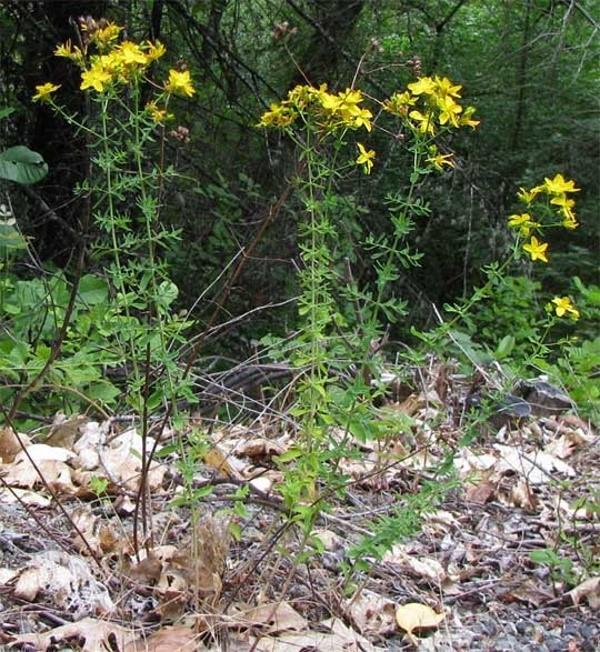What does St. John's wort look like and what is valuable in it?
 Many summer residents probably saw St. John's wort in their plots - rather tall herbaceous shrubs that bloom all summer. Due to this, they are often left as a decoration for the site, because the bright yellow inflorescences look very beautiful. But this culture gained its popularity, first of all, for its medicinal properties. She is able to help with many diseases, for which she is appreciated. What does St. John's wort look like, where to find it and when to start harvesting grass?
Many summer residents probably saw St. John's wort in their plots - rather tall herbaceous shrubs that bloom all summer. Due to this, they are often left as a decoration for the site, because the bright yellow inflorescences look very beautiful. But this culture gained its popularity, first of all, for its medicinal properties. She is able to help with many diseases, for which she is appreciated. What does St. John's wort look like, where to find it and when to start harvesting grass?
Animals avoid feasting on St. John's wort, since in large quantities it becomes poisonous for them. Hence the popular name for grass (beast fight). And he is also nicknamed the blood man, the chertogan, red grass or valiant blood.
Description of culture
St. John's wort is a perennial herb. It grows in the form of a lush bush, consisting of many thin stems. Their height can reach 1 m, and their color changes from green to red. Shoots are covered with small oval leaves no more than 3 cm long and only 1.5 cm wide. The root system of the plant is very developed, and thin roots can grow deeply.
In late spring, St. John's wort blooms with bright yellow flowers, collected in small inflorescences. And this lasts until the very end of summer, after which boxes with seeds are tied. It is noteworthy that yellow flowers, if rubbed with hands, leave a purple mark.
In the fall, the entire aerial part of the plant dies off, and in the spring, young shoots appear again.
St. John's wort - where it grows
Medicinal herb can be found throughout our homeland. It grows along the border between vegetable gardens and in the steppes, in meadows and on light forest cannons or meadows. Green bushes with yellow flowers are often seen along roads and river valleys. Even in shrub St. John's wort feels good.
The unpretentiousness of the plant allows you to grow it in the garden without problems. Agree, this is very convenient. Medicinal herb is always at hand, and it is also much cleaner than the one that we collect on the road. You can get yourself a home doctor by buying seeds. Having sown them just once, you no longer need to worry about planting, because St. John's wort is a perennial plant. In addition, it reproduces well by self-seeding.
When to collect St. John's wort
Shoots together with inflorescences are most often used as medicinal raw materials.
They contain many bioactive substances that can have a positive effect on the human body:
- macronutrients;
- vitamins;
- phytoncides;
- tannins;
- flavonoids.
You need to collect St. John's wort during flowering, and since it is long, you will have healing bushes under your feet all summer. The stems can be cut or simply broken off by hand. In this case, it is necessary to leave a couple of peduncles for further propagation of the grass. It will be convenient to tie the shoots into bunches and hang them to dry in a dry and dark place. Dried St. John's wort is stored for up to 3 years without losing its medicinal properties.